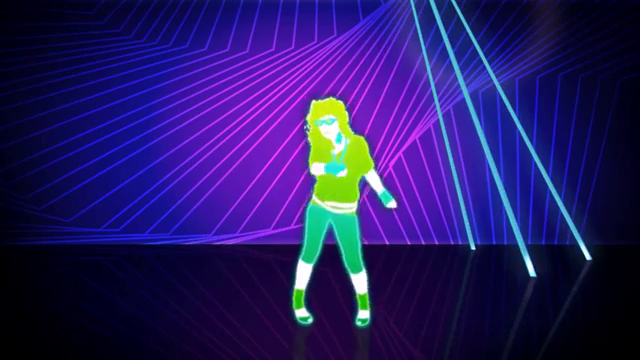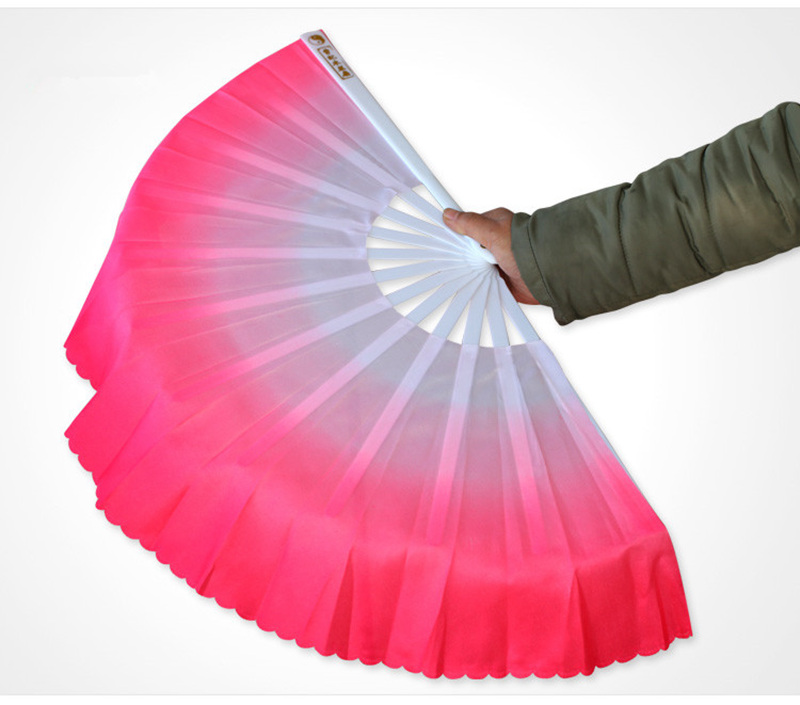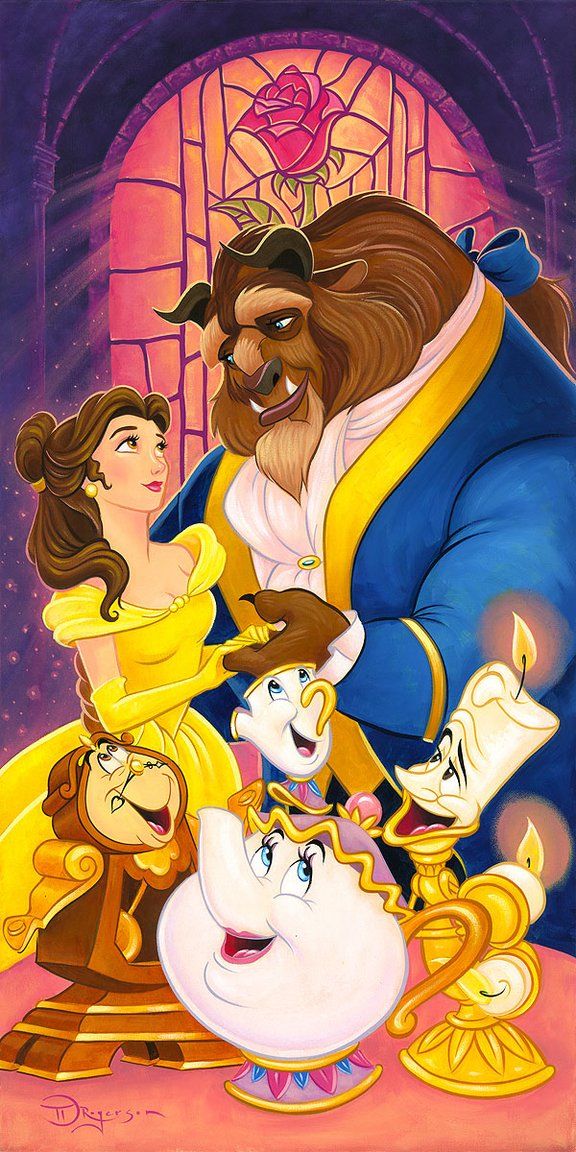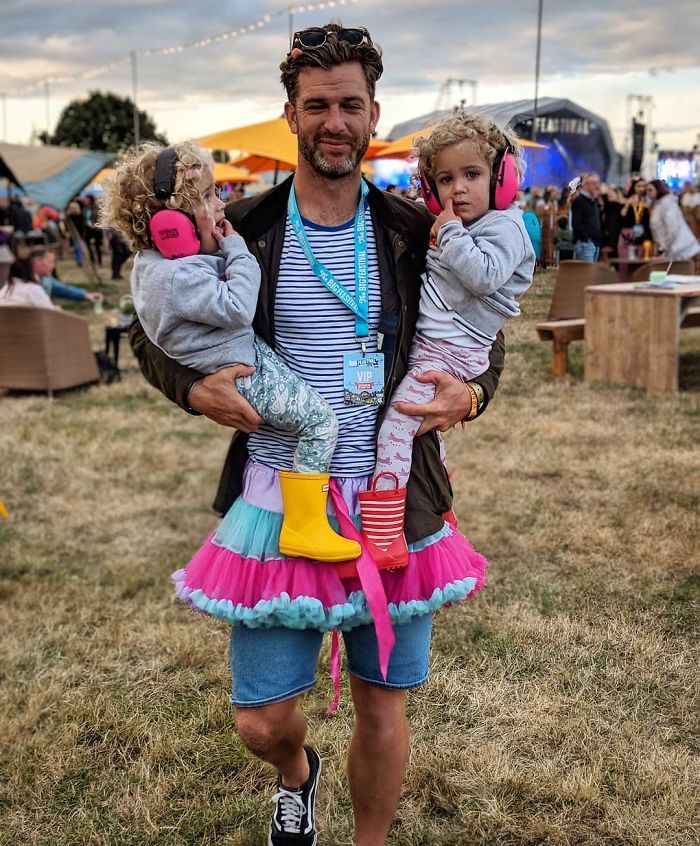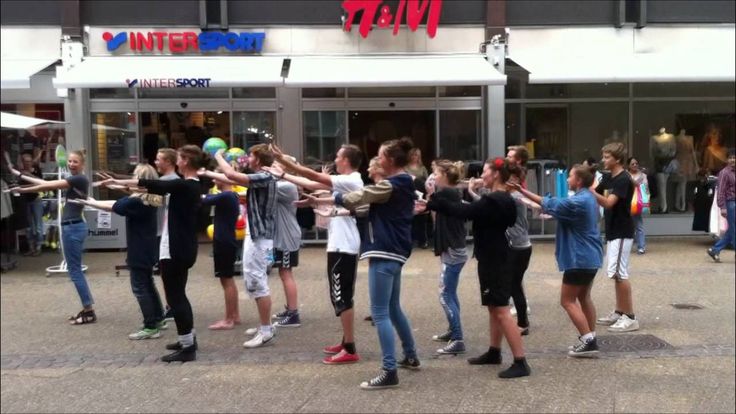How to be less stiff when dancing
How To Not Look AWKWARD When You Dance
Do you feel awkward when you dance??
It’s pretty normal to feel insecure about your dancing.
I mean, it’s your body. Your literal SELF that's being put out there!If you’re that person at the club swaying awkwardly or hanging out by the wall at a school dance…
We’re here to help make you feel more comfortable in your body.
Ready to stop being a wallflower?? Wanna get movin’ and groovin’??!?!
Let’s go!
1. Own your style
If you feel awkward when you dance, then you will look awkward when you dance. And if you keep telling yourself you're awkward, then you will stay awkward.
The first step to overcoming awkwardness is to stop that self-deprecating narrative.
You don’t have two left feet.
You do have rhythm.
You can be a good dancer.
Re-defining your view of yourself is the only way you allow yourself to grow.
And if you're truly convinced that you can't follow a beat or stop tripping over yourself... just take some time to practice those basic foundations!
STEEZY's online "Intro to Dance" program walks you through all of the fundamentals step-by-step, so it's the perfect place to start.
Click here to start the program for free!
2. Find your body’s natural groove
No two people in the world have the exact same bodies, music tastes, dance training, or life experiences. This means that no two people really dance the same.
Everyone dances like themselves. You, included! So find that groove that feels right to you.
When you take class, modify the choreography to fit your body. And when you freestyle, just start with a basic two-step.
That simple left-right, right-left skeleton leaves SO much room for you to build off of.
Feel the way your body reacts to the music...
Let yourself groove out...
3. And COMMIT to it
A lot of the time, dancers will look awkward because they PLAY THEMSELVES!!
That slight hesitation, that SMIDGEN of under-delivery, that look of “oh sh*t” on their faces…
Awkward.
Knowing and committing to yourself is the only way you won’t look awkward when you dance.
4. Loosen up!
Really, an instant fix. Most people look awkward when they dance because they are stiff. And they’re stiff because they aren’t moving.
Don’t lock your knees.
Free your neck to let your head bob.
Shake out your arms.
Relax your core.
You can even do some stretching or pilates to help your muscles get used to that relaxed, loose state!
This pilates class on STEEZY is perfect as it's literally designed to loosen the muscles you use when you dance.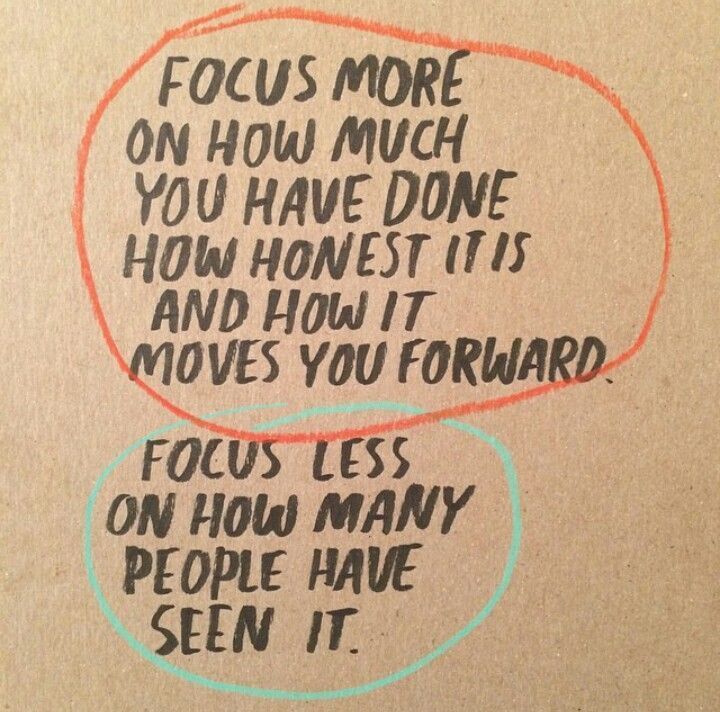
So get LOOSE. No excuses.
5. LISTEN to the music
Maybe you look awkward when you dance because your body isn’t matching the tempo of the music.
Simply aligning the rhythm of your movements to the beat will make your dancing look a lot more put together.
Or, your vibe isn't matching the vibe of the song, making your dancing look off.
Follow Melvin Timtim's advice on this:
6. Have fun
I’ve never watched someone genuinely love what they’re doing and judged them.
Pure fun never looks or feels awkward.
So stop overthinking! Put on a soundtrack to a musical you love and lip sync it all the way through. Blast some dirty rap music in your car and go awff.
Play some sexy bedroom music and serenade your lover. At the end of the day, dance is something that lets you play.
You can be anyone you want, do anything you want, and escape from whatever stresses are plaguing your mind.
Dance is an escape, not another stressor.
So have fun with it :) and looking dope will happen on its own. Being a good dancer or a bad dancer, a dope one or an awkward one...
It depends on what you practice – both mentally and physically. Use these tips to make dancing look and feel like second nature.
You’ll be tearin’ it up on the dance floor in no time.
What are some things that helped you overcome looking awkward when you dance? Comment below and leave a tip!
Classes on STEEZY Studio help you loosen up to move more comfortably.
Take our beginner program to learn the essential grooves to start with!
Is Your Dancing Too Tense? 3 Ways To Loosen Up
When a dancer’s body has excess tension, their movement can lose its luster and flow.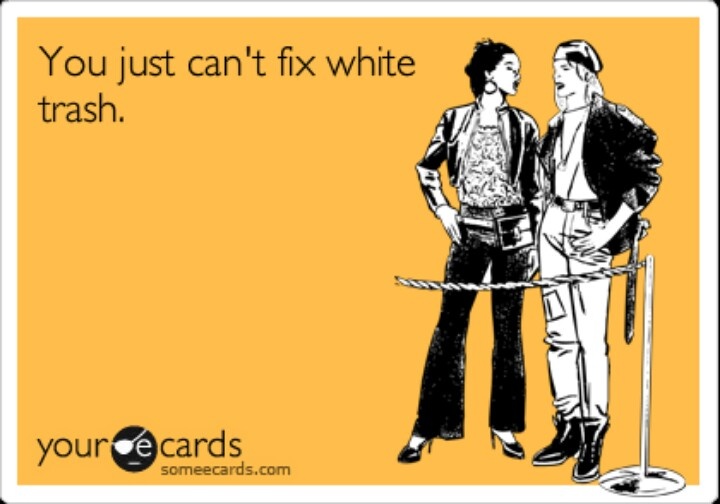 “What we see when we watch a spectacular performer is the precise application of effort,” says Peggy Gould, an associate professor at Sarah Lawrence College who teaches dance conditioning and kinesiology. “Not too much, not too little, but just the right amount.”
“What we see when we watch a spectacular performer is the precise application of effort,” says Peggy Gould, an associate professor at Sarah Lawrence College who teaches dance conditioning and kinesiology. “Not too much, not too little, but just the right amount.”
Yet even a dancer in top condition with strong technique can’t disguise the tension that builds up from overworking and imbalances. The solution does not lie simply in trying to “relax,” but in getting a better idea of where where the tension comes from.
Why We Need Some Tension
Tension refers to the action of muscles contracting. Dancing would be impossible without a certain amount of it. “We would be a puddle on the floor,” says Tom Welch, a professor of dance kinesiology at Florida State University. Gould defines it further. “Tension is muscle work that does not produce motion, but rather helps to maintain a stable or static situation. There is no change in muscle length, no change in relationship between the bones the muscle attaches to, no joint motion, no movement. ”
”
Excess tension, which can make you look stiff, derives from the relationship between muscles and bones. “When we don’t make good use of our bony support structures, it’s often our muscles that wind up playing key roles in holding us up against gravity,” Gould says. “Treating a muscle like a bone generally leads to that muscle behaving more like bone, becoming stiffer and more resistant.”
Here’s the good news: There are numerous ways to relieve excess tension.
Work you do outside of technique class can help balance your body and build strength to help you dance with less tension. Photo via Unsplash
Start by Building Strong, Long Muscles
For Welch, the way you prepare your body for the job of dance can help release excess tension. “Muscles have to be strong and long,” he says. He teaches a special Pilates class devoted to reducing tension. “It’s a two-stage process involving activation and strengthening, then releasing and stretching,” he says.
Rub and Roll It Out
Jennifer Williams, of Chaddick Dance Company in Austin, Texas, has struggled with excess tension all her dancing life due to structural imbalances from scoliosis. “I’m a firm believer in rolling out muscles, whether it’s a tennis ball or a foam roller,” says Williams. These provide feedback to the neuromuscular system—a dancer can sense her body against it, and become more aware of where she is holding extra tension. Massage can also play a vital role in releasing tightness. “I see a massage therapist every other week,” Williams says. Heat and proper stretching can also help muscles relax.
Understand The Root of the Problem
Somatics training can help dancers get to the bottom of the tension cycle. “We must understand the origins of a tension pattern in order to let go of it,” says Gould. “I encourage students to think of this work as refinement in order to advance their technical capabilities. ”
”
Many somatic systems aim at freer movement. Methods like Feldenkrais, Alexander Technique and Ideokinesis allow students to slow down, make small changes and discover the differences in their posture without from the demands of dancing. Feldenkrais focuses on skeletal balance; Alexander, on the position of the skull; Ideokinesis enlists visualization and imagery to foster physical change.
The ease, length, balance and efficiency that these systems help dancers develop all lead to a reduction of unnecessary tension. Welch finds a multifaceted approach works best, one where a dancer can spend time exploring tension in a separate class. Then it can be useful to have the concepts reinforced in dance class through the verbal cues explored in somatic classes.
Dive into the depths of the dance. Structure and movement: zoukability — LiveJournal
Author: Murasheva Nadezhda The article is a continuation of the first part: "Immersion in the depth of dance.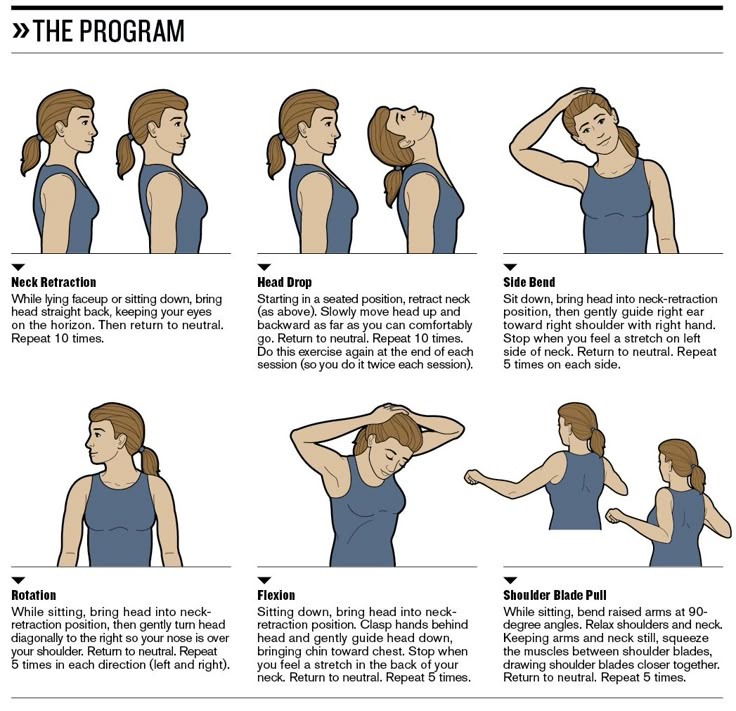 Muscles"
Muscles"
I met the concept of structure only in the last year of my active motor activity, which I think it's pretty weird right now. And at first I didn’t really understand what the meaning was in this concept in relation to the body and dance. It was only by delving deeper into the workings of the body and studying the physiology of movement in instructor courses that I began to understand what structure is and how it relates to our body and movement.
The phenomenon of structure is large and multifaceted, and I did not begin to put everything at once in one huge article. Today I will share with you a general understanding of structure, the most comfortable, functional and safe body structure for dancing and the differences in structure in different workouts. About the secret of an interesting, varied, artistically filled dance.
WHAT IS STRUCTURE?
In the explanatory dictionaries, I found the two most suitable interpretations that apply to the structure of the body:
- "A certain interrelationship, mutual arrangement of components, structure, arrangement of something"
- "A set of internal connections"
That is, the structure of the body is what our body consists of (bones, muscles, nerves, vessels, etc. - their structure, location, functions), and also (which interests me much more) is the relationship of the components of the structure to each other. Today I will give you the basic idea of how it works and how it affects the dance, and next time I will continue on a deeper level.
- their structure, location, functions), and also (which interests me much more) is the relationship of the components of the structure to each other. Today I will give you the basic idea of how it works and how it affects the dance, and next time I will continue on a deeper level.
STATES OF MUSCLE TONE
In the context of this article, I will not analyze the structure of the muscle fiber as its structure, this is not necessary here. I am interested in the structure of different muscle states as a more global phenomenon that can be felt, touched, it can be consciously changed and used both in dance and in life.
So, there are three states available to any of our muscles: relaxation, tension, stretching.
Relaxation
Soft muscle, limp, feels like a piece of jelly. There is no tension in it, and, accordingly, there is no movement.
Unconscious relaxation of the muscle:
1) Normal healthy muscle: worked, got tired, after the completion of its work, it relaxed, since its further work is not required.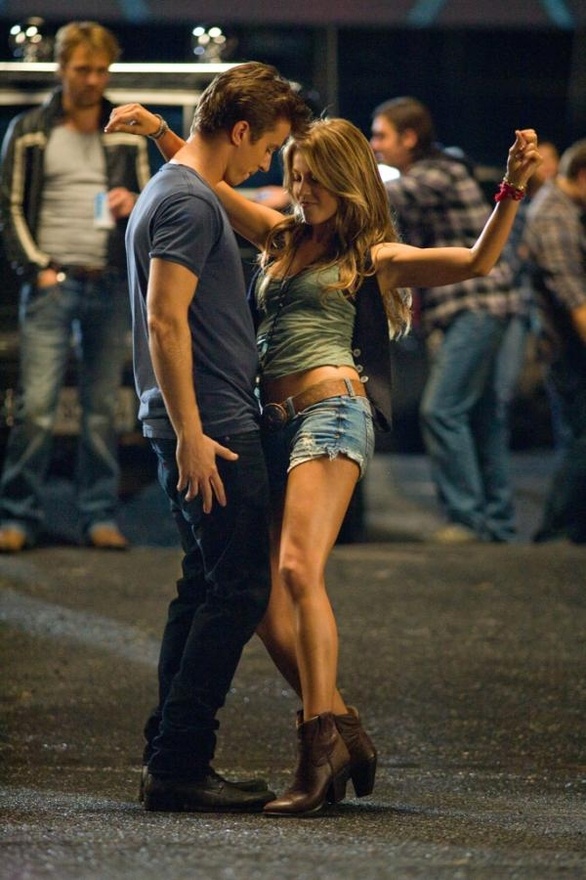
2) Weakened muscle (hypotonicity): does not work for some reason. Making it work at first is extremely difficult, all exercises feel very difficult and nasty (typical exercises for training the thoracic spine). Usually it is not felt in any way, as if it, in principle, is not in the body.
Mindful muscle relaxation:
We can adjust the rate of relaxation - in dance or in special slow exercises (Pilates, etc.) We can also consciously relax something that is chronically tense - for some this can be difficult, and this needs to be learned.
Tension
Rigid muscle contracted to perform some action. The greater the tension, the shorter and stiffer the muscle becomes. Tension can be dynamic (tightened up, performed an action - relaxed) and static (loads to hold a certain position, move a fixed support, etc.). Figuratively, tension can be compared to a spring compressed before a shot. After the shot, the spring should relax and return to its normal physiological state - relaxed, not compressed and not stretched.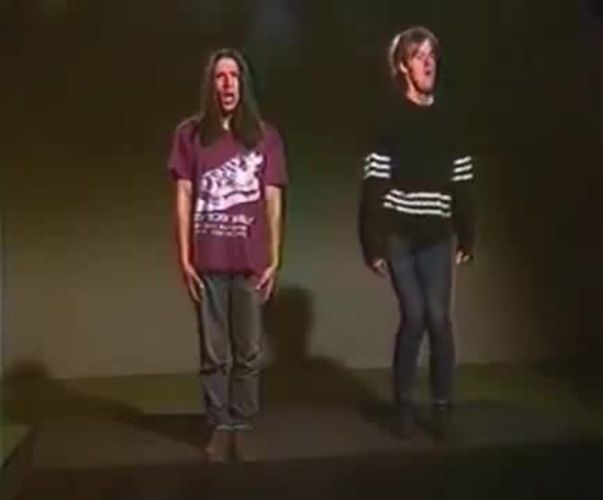 If this does not happen, then there is a dysfunction (hypertonicity) that must be dealt with, otherwise it will contribute to the development of more serious problems.
If this does not happen, then there is a dysfunction (hypertonicity) that must be dealt with, otherwise it will contribute to the development of more serious problems.
Unconscious muscle tension:
1) Healthy muscle: our nervous system itself controls the tension to perform any action (jump, bend, run, squat) - we do not need to think about the tension of all the necessary muscles in order to move It happened.
2) Muscle in hypertonicity: chronically tense, while not performing any action (lower back, upper trapezium, postural muscles of the spine). Rigid, immobile. At best, we feel its tension, stiffness, sometimes pain, we want to stretch and relax it. At worst, we live with this tension and are not aware of it until it leads to further problems. Here you need to spend extra time on learning to notice your tension, and then this will allow you to continue working on the problem. Chronic tension leads to infringement of nerve endings, to poor blood supply to muscles, connective tissues, internal organs, to the development of osteochondrosis, protrusions and diseases of the joints, to stretching of the tendons.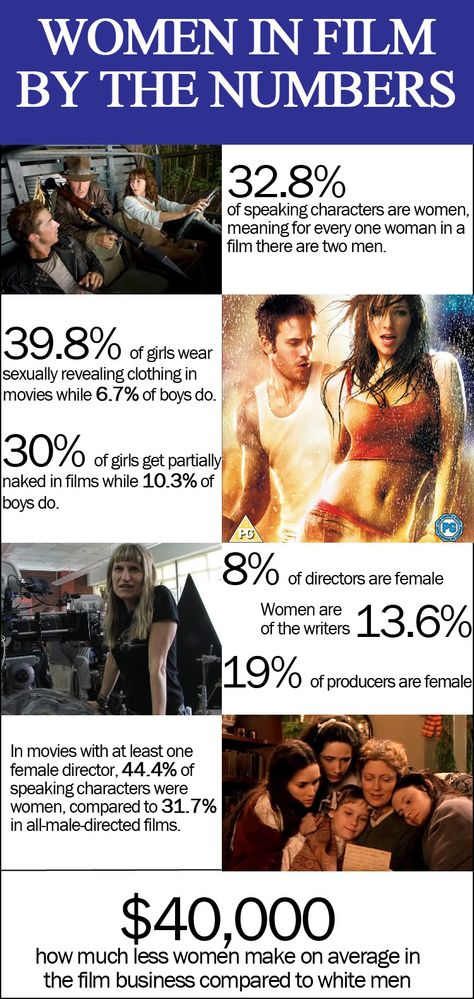 I’ll tell you about the causes of chronic stress another time, I’ll tell you the great Secret ;))))
I’ll tell you about the causes of chronic stress another time, I’ll tell you the great Secret ;))))
Conscious muscle tension:
This is when we consciously perform any movement or exercise, tracking the technique and condition of our muscles. A necessary stage in order to develop muscle memory in oneself and then move correctly already unconsciously.
Traction
An elongated muscle that is in moderate tone and maintains this condition for some time. Not over-relaxed and not over-stressed. It can be compared to a stretched string or a bowstring. An important condition necessary for the correct execution of many movements, maintaining balance, for the health of the spine, and even just for plastic surgery. You need to learn how to move forward. If a person does not know how to do this, then he will perform all movements through tension, because he cannot do otherwise. Then his body will be rigid, movements angular and sharp. If you are not completely sure that you understand the essence of stretching and do not know for sure whether you can do it, then you do not know how.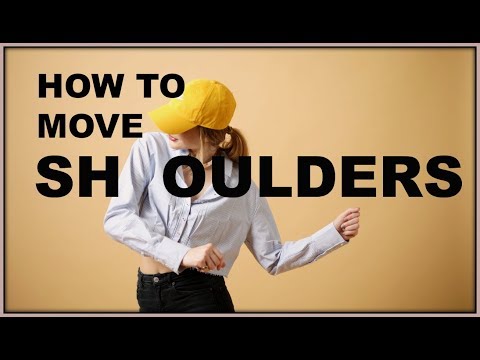 When you master stretching, there is no doubt what it is and how to do it. This is a real physical sensation that you cannot confuse with something else.
When you master stretching, there is no doubt what it is and how to do it. This is a real physical sensation that you cannot confuse with something else.
Unconscious stretching : yawned, stretched.
Conscious stretching: intentionally stretching our body in exercises, in dance. Ballet, Pilates, yoga will help you.
For harmonious control of one's body and technical dance it is important to be able to control all three states, switch them, combine several states at the same time.
Structure as a combination of muscle tone states
There is a constant alternation of these states in the dance. Usually everything is built on traction. This allows you to keep a good balance, makes movements soft, flexible and strong at the same time, protects the joints from compression. By the way, all joint gymnastics and all Pilates are performed in traction.
In Zouk (with proper technique) we clearly see the constant alternation of stretching and relaxation. The same thing happens in contemporary and jazz-modern. In ballet, ballroom and more static styles, there is much less relaxation, and all movements are done on the stretch of the body, arms and legs. In contact improvisation and qigong, on the contrary, there is much more relaxation. But tension in all dances and many bodily practices is present only occasionally when performing some more complex elements and tricks: jumps, lifts, squats. If you are constantly tense in the dance, then you are clearly doing something wrong. Tension is the essence of strength training, not dance.
The same thing happens in contemporary and jazz-modern. In ballet, ballroom and more static styles, there is much less relaxation, and all movements are done on the stretch of the body, arms and legs. In contact improvisation and qigong, on the contrary, there is much more relaxation. But tension in all dances and many bodily practices is present only occasionally when performing some more complex elements and tricks: jumps, lifts, squats. If you are constantly tense in the dance, then you are clearly doing something wrong. Tension is the essence of strength training, not dance.
I think you yourself understand that in dance there will rarely be tension or relaxation in the whole body at once. Tension - in general, still happens - in ballet, etc. But complete relaxation can only be in contact improvisation, when we completely give our weight to the floor or partner. However, the zouk appears to be a very relaxed dance. Why?
In fact, in dance there is a simultaneous combination of states in constant dynamics.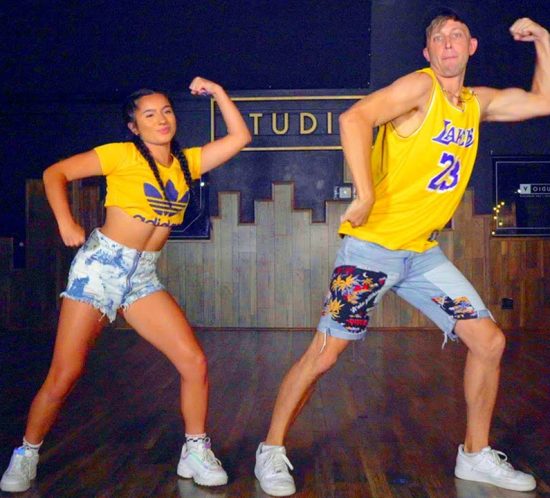 In Zouk, the most important thing is to stretch the body and relax the shoulder girdle. This is what allows you to make movements so plastic and flying. Only with a relaxed chest and a relaxed top of the trapezoid will it be possible to make beautiful, soft bones, waves, headworks, and so on. To prevent the body from falling apart and losing balance from this relaxation, the taut structure must be maintained in the center. If your center is something else (jelly or one big strain), then you will not have the physical ability to normally relax the top, and then you will move through tension in the chest, shoulders and neck. Visually, it may even seem flexible and beautiful, but physically you get very tired and feel badly leading / following a partner through your tension. In addition, this tension indicates the absence of a frame.
In Zouk, the most important thing is to stretch the body and relax the shoulder girdle. This is what allows you to make movements so plastic and flying. Only with a relaxed chest and a relaxed top of the trapezoid will it be possible to make beautiful, soft bones, waves, headworks, and so on. To prevent the body from falling apart and losing balance from this relaxation, the taut structure must be maintained in the center. If your center is something else (jelly or one big strain), then you will not have the physical ability to normally relax the top, and then you will move through tension in the chest, shoulders and neck. Visually, it may even seem flexible and beautiful, but physically you get very tired and feel badly leading / following a partner through your tension. In addition, this tension indicates the absence of a frame.
Spoiler for the next article: if your shoulders rise, then you do not and cannot have a frame. If you are a partner, then you lead with your hands, if you are a partner, then following goes through guessing.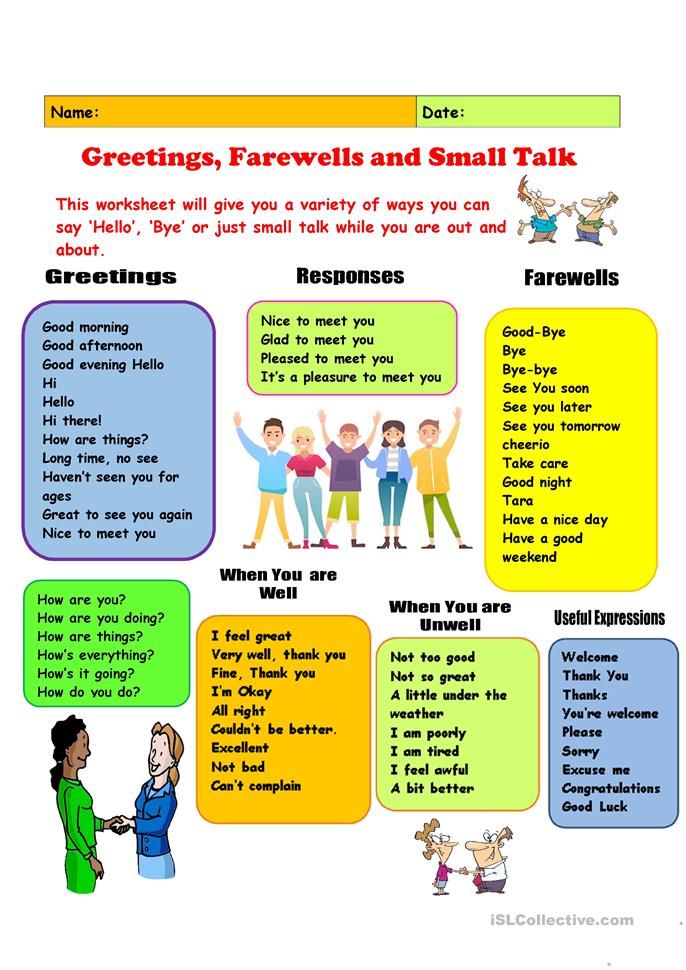
What about the legs? The legs should be soft, this is important for balance, for even distribution of the load throughout the body and for good depreciation - then it does not burden the joints. If the legs are too sluggish, tangled, or, on the contrary, too stiff, then they do not perform this function, and you get an increased load on the spine and knees, as well as a constant overstrain of the muscles of the body.
Now let's get back to understanding structure. What will be the structure of the body in the dance?
The whole pattern of tension and relaxation.
Long spine, soft legs, light top is an example of structure. A tense wooden body is also a structure, just uncomfortable and non-functional. A weak center and raised shoulders are also structure. I perceive the structure as a set of different materials and qualities of these materials, from which the building of our body and our dance is built. One builds with rubber bands and strong flexible bases, the other with cardboard and snot.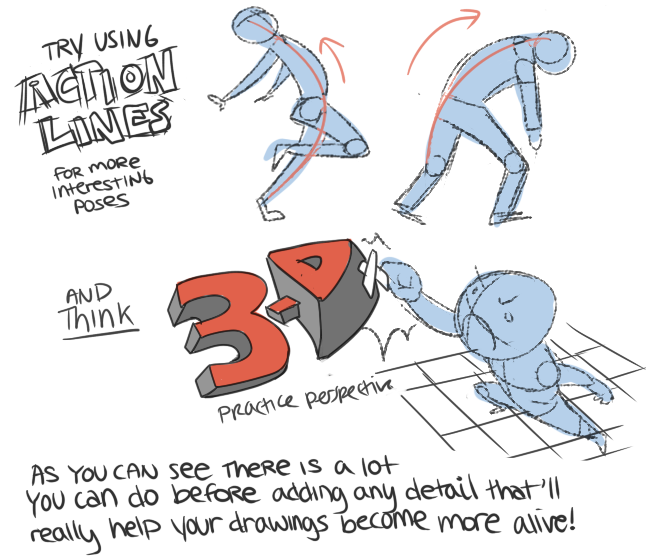
FRAME is also a structure. And in different styles of dance, the structure of the frame is different. The position of the hands, the degree of tension, the manner of touching, the tone of the shoulders, and so on - all this matters.
Grounding and overestimation of the center are also nuances of the structure. In some dances we gravitate more towards the floor (west coast, contempo, improvisation), in some we rush upwards more (ballet, lambazook). Zouk, in my opinion, is universal and allows you to play with the height of the center, which, in turn, will affect the manner of movements and the nature of the interaction of partners. The height of the center will depend on the height of the frame, on the degree of relaxation, on the structure of the bodies of both partners, and on each specific movement and point of contact. Even from shoes. Like it or not, heeled shoes raise the center higher.
Structure and interaction of partners
Rigid body poorly transmits movement and impulses. A tense partner will feel badly leading. A tense partner will lead the partner at the “volume level” available to him, conditionally, yell in her ear. Even if it is a very soft, sensitive partner. He cannot be quieter, simply because then he himself will not hear his words. He does not realize that "quieter" exists, and that this is actually the norm, and not a whim of a partner ("how picky you are"). For him, the norm is to yell in the ear. That's where the problem is.
A tense partner will feel badly leading. A tense partner will lead the partner at the “volume level” available to him, conditionally, yell in her ear. Even if it is a very soft, sensitive partner. He cannot be quieter, simply because then he himself will not hear his words. He does not realize that "quieter" exists, and that this is actually the norm, and not a whim of a partner ("how picky you are"). For him, the norm is to yell in the ear. That's where the problem is.
An over-relaxed, shapeless structure also distorts the interaction, the movement loses control and manageability. In this state, it is easy to get injured, sprained by negligence and inattention.
Only the state of soft tone on the stretch makes the dance sensitive, pleasant and well controlled.
If we imagine the interaction of partners as a pair structure, then it is also heterogeneous. In an interesting dance, this structure will change: it will become softer or denser, tighter or more airy from movement to movement, depending on what is happening in the dance, on the music and the feelings of the partners.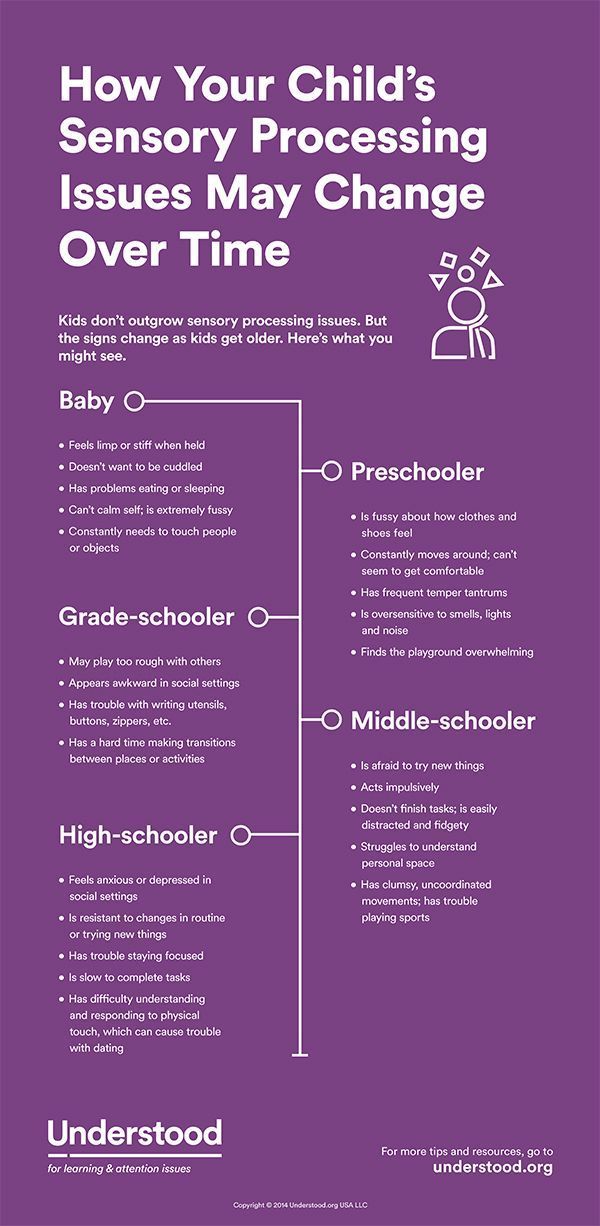 Contrabalances and supports require more stretch and tone. Fingertip contact requires a subtle air pull (in the tooth), which can then go into counterbalance or support. Bodyworks can be very soft and gentle or active and rhythmic. A good dancer is not subject to the same structure (because he doesn't know how to do it differently), he manages his own structure as an artist. This makes the dances exciting, expressive and different from each other, perfectly keeps the attention of the dancers in sensitive contact with each other.
Contrabalances and supports require more stretch and tone. Fingertip contact requires a subtle air pull (in the tooth), which can then go into counterbalance or support. Bodyworks can be very soft and gentle or active and rhythmic. A good dancer is not subject to the same structure (because he doesn't know how to do it differently), he manages his own structure as an artist. This makes the dances exciting, expressive and different from each other, perfectly keeps the attention of the dancers in sensitive contact with each other.
An example of playing with structure in a dance. If you want a deeper understanding of what I'm writing about here, find moments in the video where relaxation, grounding, stretching up and to the side, interaction with the partner's weight, changing dynamics are used. Think about where Anderson and Brenda use their core muscles to move, and where they relax and give their body to gravity and momentum.
Structure and internal state
The structure of your body, the nature of movement and the internal state are closely interconnected and mutually influence each other. Your mood and mental characteristics affect the structure of your body both at the moment and in general (psychosomatics), which in turn affects how you dance and how you want to move. From the dance and movement of a person, you can tell a lot about him and his model of interaction with the world. And, on the other hand, work on the manner of movement, relaxation and stretching exercises will affect your mental state and mood, can even lift layers of old traumas and memories and serve as light therapy for the experience, and this will change the way you feel, how you move and what decisions you make. This is the basis of body-oriented and dance-movement psychotherapy.
Your mood and mental characteristics affect the structure of your body both at the moment and in general (psychosomatics), which in turn affects how you dance and how you want to move. From the dance and movement of a person, you can tell a lot about him and his model of interaction with the world. And, on the other hand, work on the manner of movement, relaxation and stretching exercises will affect your mental state and mood, can even lift layers of old traumas and memories and serve as light therapy for the experience, and this will change the way you feel, how you move and what decisions you make. This is the basis of body-oriented and dance-movement psychotherapy.
This concludes today. To begin with, I wanted to convey a general idea of \u200b\u200bthe structure and its influence on movement. Think about what structure you usually dance with, do you know how to manage it? What works and what doesn't and why, in your opinion? Have you noticed how your structure changes with your mood?
Next time I will share the knowledge about the structural relationships in our body, which I received only in instructor courses. This will already give an understanding of the causes of tension in your body and a practical key to how to make your movement easier. It will be clear why it is pointless to ask someone to just drop their shoulders and why practicing the frame only on dance moves leads to almost nothing. I promise you won't have to wait long for the next article ;)
This will already give an understanding of the causes of tension in your body and a practical key to how to make your movement easier. It will be clear why it is pointless to ask someone to just drop their shoulders and why practicing the frame only on dance moves leads to almost nothing. I promise you won't have to wait long for the next article ;)
______________________________________________
Zoukability in VK: https://vk.com/zoukability
Regular classes in Moscow, body development, Pilates. stretching: https://vk.com/club168175218
Individual lessons and questions: https://vk.com/dancingflow
How to stop worrying and start burning?
This is one of those posts that deals with frequently asked questions that have already been answered many times in PM and in real conversations. But the number of questions somehow does not dry out, so I decided to summarize my answers, experience, reasoning and create a separate article on this burning topic.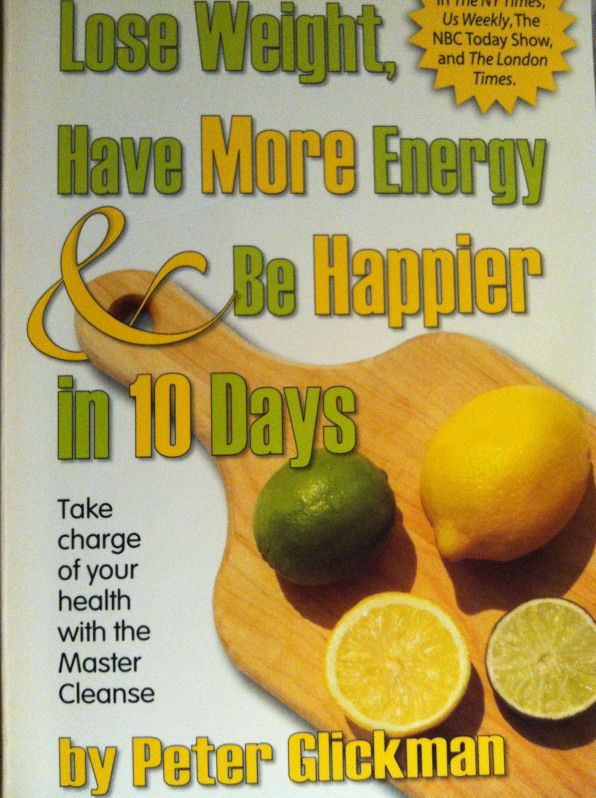 I want to immediately focus on the fact that, perhaps, all this is focused specifically on swing dances, which, in terms of expression of feelings and emotional values, are very close to social dancing even in a competitive form - we value naturalness, sincerity, warmth, joy, and not the gloss and monotony of ideal dances. masks worn by dancers, such as ballroom dancing.
I want to immediately focus on the fact that, perhaps, all this is focused specifically on swing dances, which, in terms of expression of feelings and emotional values, are very close to social dancing even in a competitive form - we value naturalness, sincerity, warmth, joy, and not the gloss and monotony of ideal dances. masks worn by dancers, such as ballroom dancing.
----------------------------------------
So, for some reason, it so happened that girls quite often turn to me (and several times boys, however, one asked not for himself, for his partner) with one and the same same question, formulated in different ways: how do you manage to have fun and have fun on stage? why do you look bright and happy during the performance, and I can't do it? how to learn to show on stage not only the technique, but also the emotions from the dance? In a word: how to stop worrying and start burning!?
I must say right away that it seems to me that I am not the person who can answer this question perfectly: I did not study acting or performing arts, and for me, "burning" is for the most part not some a separate type of activity that I practice and which I specially learned as they study in theater schools, but the natural result of those emotions, sensations, inner state that happens to me when I dance, when I perform. And therefore, the only thing I can talk about (however, what I think is the right way) is just about how not to try to train the "annealing" and the "correct" happy-emotional face, but try to find, feel inside yourself that joy and pleasure, which subsequently naturally correctly reflect on the face, facial expressions, plasticity and give the very thing that has always been present in the judging criteria, and in the new rules it is placed in a separate paragraph "Perfomance" and is described as "charisma, joy of dancing, easy execution, relax, smooth..."
And therefore, the only thing I can talk about (however, what I think is the right way) is just about how not to try to train the "annealing" and the "correct" happy-emotional face, but try to find, feel inside yourself that joy and pleasure, which subsequently naturally correctly reflect on the face, facial expressions, plasticity and give the very thing that has always been present in the judging criteria, and in the new rules it is placed in a separate paragraph "Perfomance" and is described as "charisma, joy of dancing, easy execution, relax, smooth..."
In general, in my opinion, does not make sense to deal with the consequences, you need to find and eliminate the cause of . If this is not done, then sooner or later the consequences will still manifest themselves in one form or another, or result in some kind of side effect, just like if the weed is not uprooted, it will grow again, and any drugs that relieve symptoms, and do not eliminate the causes of the disease, at best do not lead to deterioration and temporarily alleviate suffering, but do not lead to recovery.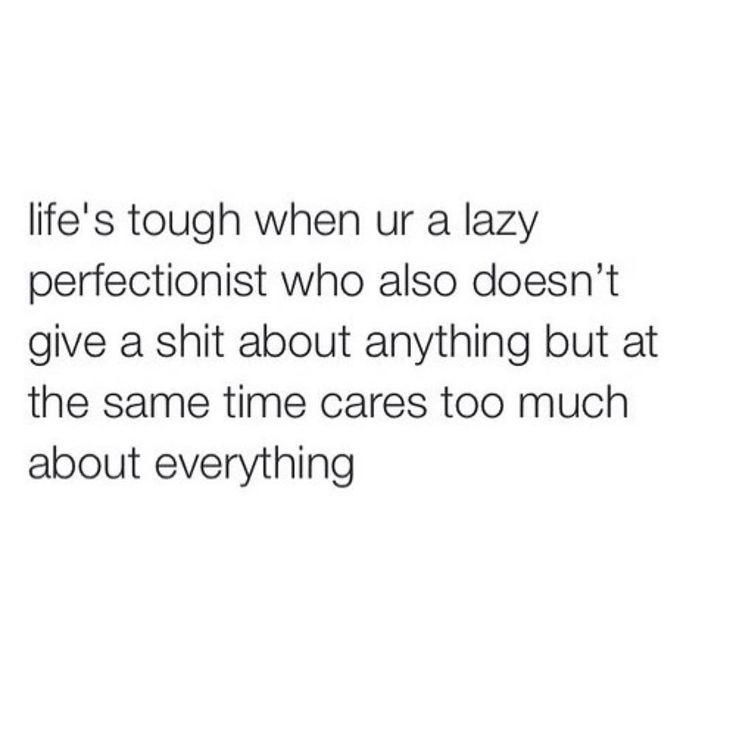 Therefore, the first thing I recommend doing is to figure out where the legs of your problem grow from, why you don’t rejoice, don’t smile, don’t enjoy the scene, and fight exactly with the source of the problem, and not train a fake smile in ten different ways.
Therefore, the first thing I recommend doing is to figure out where the legs of your problem grow from, why you don’t rejoice, don’t smile, don’t enjoy the scene, and fight exactly with the source of the problem, and not train a fake smile in ten different ways.
----------------------------------------
So, why do I look open, emotional, bright on stage, why do I allow myself to burn and have fun?
1. Because I love what I do. Because I enjoy it.
At first I wanted to write "because I love to dance", but then I realized that this would not be a complete answer. It is important to love "dance" in order to train productively, to spend a lot of time at parties, to withstand dance gatherings and camps with almost round-the-clock immersion, etc. Of course, I really love boogie-woogie, its plasticity, dynamics, energy, character, I understand why it is exactly like this, and not another, how it works, how it was formed and which way it went, how it corresponds to music, what is important and important in it.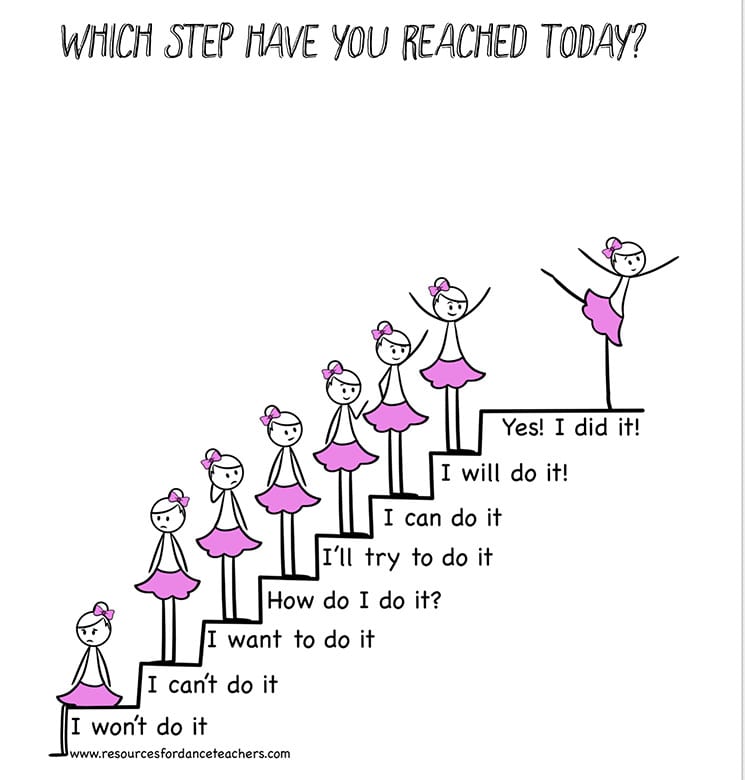 cool, and it's all close and interesting to me. And, of course, I like boogie-woogie music. I find in it things that are consonant with my personality and my character. I've always liked rock'n'roll, drive, breakaway, crazy antics - I miss that in other dances. If you came to boogie woogie, then you like it too - I do not believe that a person who can not stand Elvis, Jerry Lee Lewis, their crazy era, can come to dances where you have to listen to them for several hours in a row. And if you also love it all, then it should cause a smile, positive - just don't hold it back!
cool, and it's all close and interesting to me. And, of course, I like boogie-woogie music. I find in it things that are consonant with my personality and my character. I've always liked rock'n'roll, drive, breakaway, crazy antics - I miss that in other dances. If you came to boogie woogie, then you like it too - I do not believe that a person who can not stand Elvis, Jerry Lee Lewis, their crazy era, can come to dances where you have to listen to them for several hours in a row. And if you also love it all, then it should cause a smile, positive - just don't hold it back!
But, of course, in order to burn on stage, you need to love not only the dance and music itself, but also the performance itself as a fact of public attention. That is, experiences that are associated with the fact that many people are looking at you - and everything is different: judges are critical, your fans are enthusiastic, rivals are excited, ill-wishers are critical, etc.
It sounds scary, but in fact you can find a lot of useful and pleasant things in everything, learn to love it and enjoy it, and personally I can say that I love it all very much. Firstly, I (more precisely, our couple) have my own idea of what a dance is, what it should be, how it should look, how it should be built and performed, and we are trying to dance our own boogie-woogie, in in the form and in the form that we consider the best and which is important to us. Each of our performances is an attempt to convey our idea of dance to others, to share it and open its steepness to those who look at us, and this thought and this feeling also inspire and inspire. That is why successful moments evoke an absolutely sincere joyful reaction in me. The desire to show something, to share your vision and understanding of dance, your hearing of music - this is what makes you want to move mountains, and when it works out, it is positive, joy and happiness.
Firstly, I (more precisely, our couple) have my own idea of what a dance is, what it should be, how it should look, how it should be built and performed, and we are trying to dance our own boogie-woogie, in in the form and in the form that we consider the best and which is important to us. Each of our performances is an attempt to convey our idea of dance to others, to share it and open its steepness to those who look at us, and this thought and this feeling also inspire and inspire. That is why successful moments evoke an absolutely sincere joyful reaction in me. The desire to show something, to share your vision and understanding of dance, your hearing of music - this is what makes you want to move mountains, and when it works out, it is positive, joy and happiness.
And secondly, I like to show and prove to people that I can, that I'm cool, that I'm the best, I like it when my inner feeling is confirmed by both professionals (judges and dancers) and amateurs (spectators)! And when it works out, it gives me great joy, a boost of energy, when it doesn't work out - I perceive this as an experience that will be useful to me in order to succeed next time.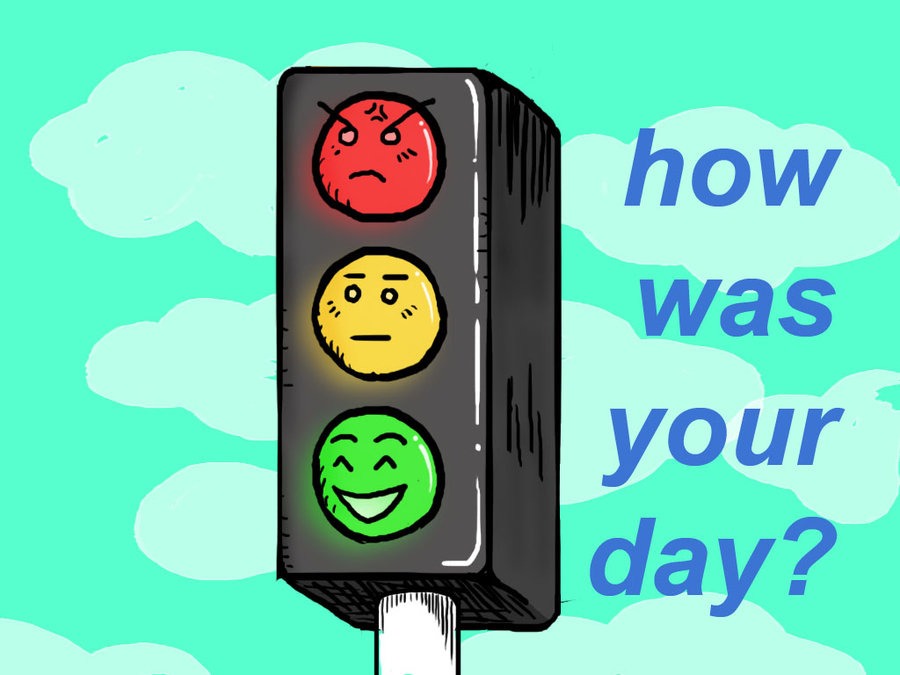 Therefore, when I am given the opportunity to realize what I want, I always rejoice at it and strive to use it one hundred percent, and this joy obscures fear and anxiety, which, of course, also exist, but when they are only side effects of a pleasant business, they are easily overcome, are not dangerous, but on the contrary, they even contribute to the release of adrenaline and increase opportunities.
Therefore, when I am given the opportunity to realize what I want, I always rejoice at it and strive to use it one hundred percent, and this joy obscures fear and anxiety, which, of course, also exist, but when they are only side effects of a pleasant business, they are easily overcome, are not dangerous, but on the contrary, they even contribute to the release of adrenaline and increase opportunities.
Try to find your buzz in public performances: after all, if you came to swing dancing, then you should like what is inherent in their nature, underlies and demonstrated in dozens of old dance videos, namely: to go to the center of the circle and show , how can you play the game "who is cooler", in which there are no losers, because everyone gets pleasure from the process, and the audience loves not only winners, but often not even winners at all (what are the performances of at least Rasmus and Tova , who were never winners, but got such a standing ovation that the four-time world champion Torbjorn never dreamed of).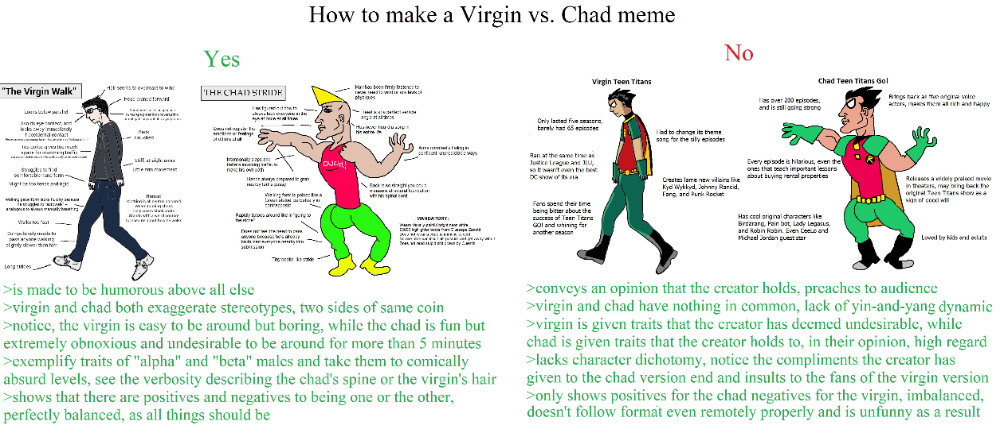 Try to understand that in fact it is how exciting, how pleasant it is, the reverse side of adrenaline is a thrill, and the audience loves you regardless of the result.
Try to understand that in fact it is how exciting, how pleasant it is, the reverse side of adrenaline is a thrill, and the audience loves you regardless of the result.
2. Because I like myself, because I am confident in myself.
This is a very difficult point, and I'm afraid I can't compete with millions of trainings and tons of psychological and pseudo-psychological literature on how to gain self-confidence and start to like yourself. It is worth saying that, as it seems to me, our dances themselves greatly contribute to gaining self-confidence, because the environment of swing dances is very open, friendly, in an adequate sense body-positive. Even the top competitive partners are all very different both in physique and style, in the manner of dressing and behaving, and each is very good in her own way. Try to watch, for example, the salsa championships, where naked, polished chicks in self-tanning are twisting their spherical butts, and then compare with our top partners, among whom there are cute plump, and thin, and athletes, not to mention the character, manners and style. Understand that boogie woogie accepts everyone for who they are, to be the best you do not have to meet the Hollywood standard!
Understand that boogie woogie accepts everyone for who they are, to be the best you do not have to meet the Hollywood standard!
Try to look at yourself in the mirror more during training, look for good poses and moments during the dance in which you will say "wow, now I'm cool" or "I'm doing great." Over time, there will be more and more such things, and when your feeling is reinforced by applause from the audience, you can no longer doubt it. Do not be afraid to grimace and make some funny faces: in boogie-woogie music and dance there is a sea of humor, funny moments, wit - and you want to somehow react to all this, somehow express it, and your mimic abilities will be very useful here . Grieve and make yourself laugh, don't be afraid and don't be shy, please yourself with different faces! I like my "stupid" photos no less than with a smooth chic smile (welcome to our Instagram), and if you want to make sure that any even super-duper boogie-woogie star has such photos, and they don’t cause not negative emotions - you need to look at the photo section on the WRRC website, or even better - in our public "Boogie dancer chota says".
Also, try not to criticize yourself too harshly. I understand that this is also a very difficult moment for me, but personally it helped me a lot that it turns out, firstly, not everything that is noticeable to the person himself is noticeable to others. For example, one of my acquaintances has a crooked tooth that cannot be noticed at all, because it is located on the side and practically does not open even with a strong smile. Imagine my surprise when this person told me that he was embarrassed to smile precisely because of this tooth! Because of some crooked tooth that I didn't notice at all until he showed it to me! And there are a lot of such examples, think about whether your shortcomings are so terrible and whether they are real and noticeable. Secondly, one more of my discoveries: what one does not like, another may like very much. There are no universal things and what you consider your main disadvantage may well be your highlight.
I know very well that I'm not a stereotypical beauty, I don't have a perfect face and a non-standard figure. But this is not important at all, because there are no rules on how exactly I should look, there are no standards with which I should compare myself, and in any case, no matter how I look, there are and will be those people who I don't like me, as well as those who like me . Therefore, why break spears in vain, no matter how you look, you are still not a hundred dollars, so some will praise it, while others will scold it - look and behave the way you want, as you like - life will become easier and smile on the face will appear much more often!
But this is not important at all, because there are no rules on how exactly I should look, there are no standards with which I should compare myself, and in any case, no matter how I look, there are and will be those people who I don't like me, as well as those who like me . Therefore, why break spears in vain, no matter how you look, you are still not a hundred dollars, so some will praise it, while others will scold it - look and behave the way you want, as you like - life will become easier and smile on the face will appear much more often!
3. I am constantly in search of myself, my style, image.
I already said above that I love boogie-woogie because every dancer and every couple can choose how they want to look, move, what style, presentation, manners they will have. If you study the history of at least competitive boogie, it will become obvious how different and special all the partners (and couples in general) are, and how much this comes from the initial data of appearance and biometrics, and from the understanding of dance, and from personal character traits: circus performers and acrobats William and Maeva, pranksters and fools Rasmus and Tova, Hollywood beauties Torbjorn and Susanna, cuties and bunnies Jessica with Kakushka, vintage and true swing Isabella with Pontus, etc.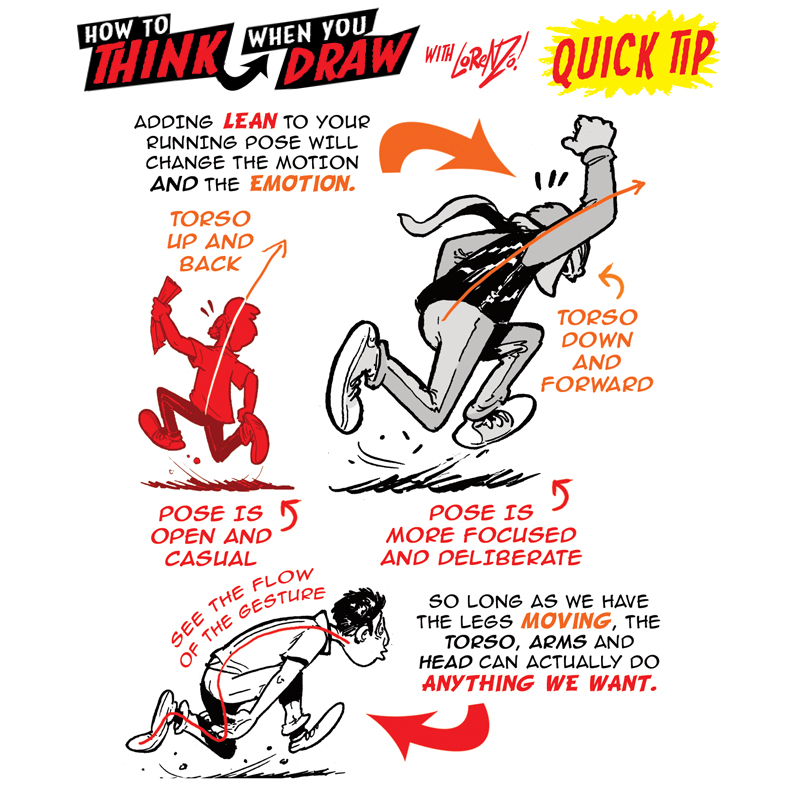 Each couple (and each partner especially!) is different in their own way, and throughout their dance path they try on different manners and ways of behaving on stage. Try, experiment, look for what will be organic for you.
Each couple (and each partner especially!) is different in their own way, and throughout their dance path they try on different manners and ways of behaving on stage. Try, experiment, look for what will be organic for you.
If you find exactly the image that suits you and in which you will optimally open up and feel organic and natural, I will be comfortable on stage and easily express emotions.
If I came up with a new dress for myself, and it's not like everyone else's - I'll sew it and try to dance in it, if I don't like it - it's okay, now I know that I don't like it, if I like it - great, then I will continue to dig exactly in this direction. If I want to slow dance in trousers, I will try, if I want to wear shorts, I will wear shorts. If I don’t like the cute vintage hairstyles that are customary for boogie-woogie competitions, no one will force me to do this, because my inner self-awareness requires that I shave my sides and put on a mohawk. The same applies to behavior on stage, manners, style of movement. Try, change, choose, look for what suits you and what you are good at. And when it's good - you want to smile, burn, have fun. Let competitions be an occasion for you to express yourself, open up, show yourself in a way that you do not have the opportunity, for example, at your work in the office or at home. Buy yourself the dress you want, make the hairstyle you dreamed of - and have fun.
Try, change, choose, look for what suits you and what you are good at. And when it's good - you want to smile, burn, have fun. Let competitions be an occasion for you to express yourself, open up, show yourself in a way that you do not have the opportunity, for example, at your work in the office or at home. Buy yourself the dress you want, make the hairstyle you dreamed of - and have fun.
4. I'm not afraid to experiment = I'm not afraid of making mistakes.
In general, I can hardly understand people who are worried, for example, because of an unsuccessful haircut - it's all just for a couple of weeks, think about it, but I tried it! Well, or even because of some kind of mistake or failure that happens - well, anything can happen, you need to try to treat it easier, draw conclusions and move on. A negative experience is also an experience, and it is also a step towards the goal, you just need to draw the right conclusions and benefit.
Of course, no one likes to look stupid or bad, but on the other hand, we only have one life, and if we constantly kill ourselves because of every mistake, mistake, failure, then how much time and effort it takes! One performance is just one performance, nothing terrible happened, even if everything went badly, this dress does not suit you at all, and you went too far with blue lipstick.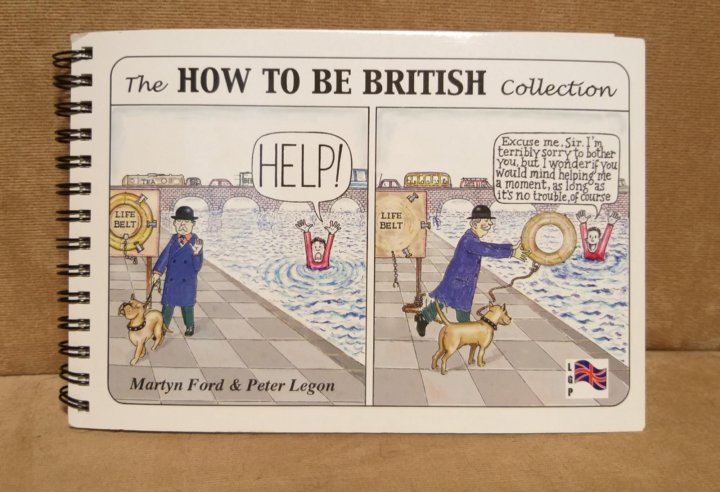 I have had many failures regarding any aspect of the dance - both costumes that disfigure me (which, in principle, is not so difficult, for example, if I have wide straight shoulders and the absence of feminine curves in the right places), and dance moments in which I was stupid and screwed up, but what can I say, once everything was so shitty that after the performance I locked myself in the women's toilet and cried there for 20 minutes until Kolya found me and pulled me out of there. That was a long time ago, and now I'm even more relaxed about such things, but even then I quickly realized what nonsense I was toiling over the past, if there was an opportunity to spend this time and energy preparing for the future.
I have had many failures regarding any aspect of the dance - both costumes that disfigure me (which, in principle, is not so difficult, for example, if I have wide straight shoulders and the absence of feminine curves in the right places), and dance moments in which I was stupid and screwed up, but what can I say, once everything was so shitty that after the performance I locked myself in the women's toilet and cried there for 20 minutes until Kolya found me and pulled me out of there. That was a long time ago, and now I'm even more relaxed about such things, but even then I quickly realized what nonsense I was toiling over the past, if there was an opportunity to spend this time and energy preparing for the future.
So keep it simple, try what you want, take risks, and most importantly - take mistakes as experience and learn from them, not suffer.
5. I "train" to show emotions in life.
I put "training" in quotation marks because I don't really train, I just manifest them. Many people love me for it, and many do not, but I consider the only correct way of life to openly express my feelings, and, most importantly, to express them in general. Indifference and monotony seem terrible to me, a couple of declarations of love and expressions of delight, well, or good sincere quarrels and subsequent reconciliations, I always prefer diplomatically polite neutral tricks. It goes without saying that everything has its place and time, that there must be a situation and an opportunity for this, and that I am unlikely to run after a person who does not ask me to tell him what I think about him - these are already extremes, no need exaggerate. But still, if I like something in a person, I try to tell him this, not to keep it to myself, just like vice versa - if I don’t like something, I’m unlikely to smile and nod politely, most likely I I will get angry or upset if I am offended, I will burst into tears, if they scare me - I will scream, if I am surprised - my face, not being afraid to become ugly, will express the most natural unrestrained surprise.
Many people love me for it, and many do not, but I consider the only correct way of life to openly express my feelings, and, most importantly, to express them in general. Indifference and monotony seem terrible to me, a couple of declarations of love and expressions of delight, well, or good sincere quarrels and subsequent reconciliations, I always prefer diplomatically polite neutral tricks. It goes without saying that everything has its place and time, that there must be a situation and an opportunity for this, and that I am unlikely to run after a person who does not ask me to tell him what I think about him - these are already extremes, no need exaggerate. But still, if I like something in a person, I try to tell him this, not to keep it to myself, just like vice versa - if I don’t like something, I’m unlikely to smile and nod politely, most likely I I will get angry or upset if I am offended, I will burst into tears, if they scare me - I will scream, if I am surprised - my face, not being afraid to become ugly, will express the most natural unrestrained surprise. I am not shy to laugh and often cry, I tell people that they are beautiful and that I love them, that they are doing something cool when I see it, just like I am indignant and unhappy when they do something unpleasant and bad.
I am not shy to laugh and often cry, I tell people that they are beautiful and that I love them, that they are doing something cool when I see it, just like I am indignant and unhappy when they do something unpleasant and bad.
Of course, I suspect that an ideal diplomat or an adherent of Dale Carnegie will not come out of me, because I don’t know how and don’t want to please everyone and be friends with everyone, but this path allows those people who like me to be near me, such what I am, and not the nonsense that I spun to them so that it would be pleasant to communicate with them, and saves me from people with whom my understanding of the world and life does not converge and for communication with whom I would have to pretend to be someone else.
And of course, it makes it easier to express emotions on stage. Since I often show different emotions, my body, facial expressions, face - everything is ready to show them. Try to show more emotions in life, especially good ones, so that your facial expressions and your body get used to expressing joy, so that it turns out to be half-turned: today the weather is good - well, cool, skip along the street, your partner has a new shirt - say that you noticed and she is super, for once a new figure has turned out - jump for happiness and hug). For some it’s easier, for others it’s more difficult, it all depends on habits, upbringing, character, but I’m sure that if in life the manifestation of emotions through words, facial expressions, gestures becomes daily and natural, you won’t have to rejoice on stage painfully learn, the face and body will then know how best to express it.
For some it’s easier, for others it’s more difficult, it all depends on habits, upbringing, character, but I’m sure that if in life the manifestation of emotions through words, facial expressions, gestures becomes daily and natural, you won’t have to rejoice on stage painfully learn, the face and body will then know how best to express it.
6. I try to dance better and better.
Yes, yes, this is also very important. Look at any group of beginners. Most often, they have tense faces, expressing a mixture of suffering and perseverance, and this is due precisely to the fact that they do not have a good command of their body, basic, the basic dance principles have not yet become automatic, convenient and natural. It is impossible to relax and enjoy the process if you are constantly thinking about which leg to transfer your weight to or how to hold your hand - the sooner this all becomes automatic, convenient, the sooner the RAM will be freed up, which can be used for other purposes: listen to music, look at a partner and much more.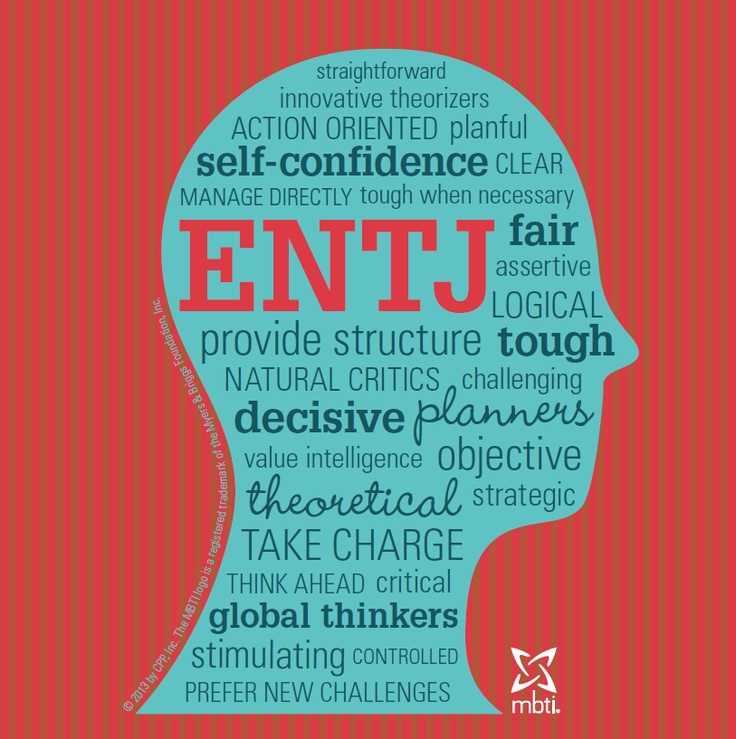 How easy and comfortable you dance depends on how pleasant it is for you - so develop your dance skills, bring the basic principles and technique to automatism so that nothing distracts you!
How easy and comfortable you dance depends on how pleasant it is for you - so develop your dance skills, bring the basic principles and technique to automatism so that nothing distracts you!
Also try to be in good physical shape. Dancing for a minute and a half at a fast pace is not the easiest task for breathing and the circulatory system. If you get tired quickly, it can become impossible to enjoy anything. I'm not saying that you need to become a marathon athlete, just make sure that you don't have a hell of an effort to dance a competitive program and that you don't survive on the court, but feel comfortable. Running, fitness, aerobics - any sport will help you.
7. I don't panic, I don't get too upset and I try to "keep face" if something goes wrong.
Of course, if something unpleasant happens in the dance, this is a problem, because if you are used to always expressing your emotions sincerely, this can spoil the impression of your dance.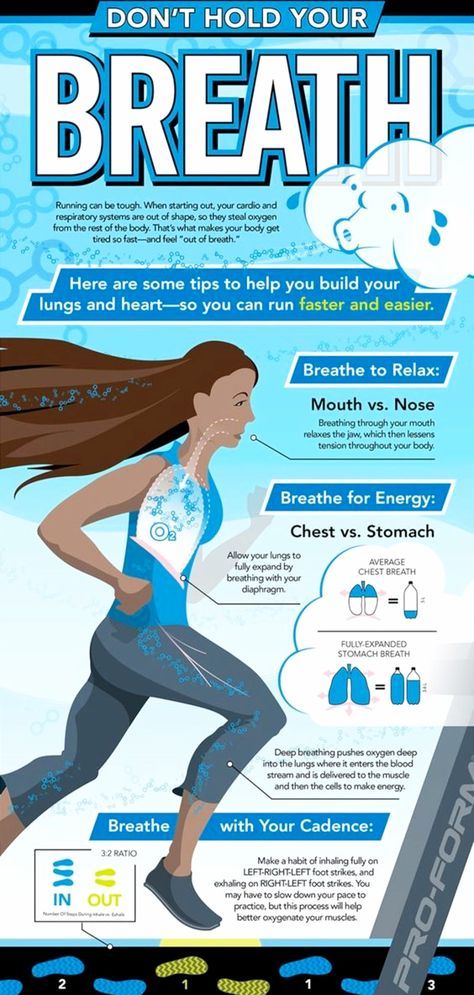 Therefore, all the previous paragraphs rather talk about how to learn to show your feelings, accustom your body and face to them, and how to create the best atmosphere so that all this works and works on the court. Therefore, of course, the work of the partner also consists in smoothing out such moments and at all costs maintaining a positive look and attitude. Firstly, for this there must be a habit, a switch to the "I'm performing, now everything is super!" mode. Practice this in self-study. Run - it means you should forget that something hurts, stop doubting whether you turned off the iron, try to think only about your partner and music, and enjoy everything that happens. With the right attitude and the habit of enjoying the dance, adrenaline and excitement should only help the overall result, I am often so inspired by the performance that I cannot be upset not only by some inaccurate hit on the break, but also by some kind of abrasion or bruise, which I got a lot when performing tricks)).
Therefore, all the previous paragraphs rather talk about how to learn to show your feelings, accustom your body and face to them, and how to create the best atmosphere so that all this works and works on the court. Therefore, of course, the work of the partner also consists in smoothing out such moments and at all costs maintaining a positive look and attitude. Firstly, for this there must be a habit, a switch to the "I'm performing, now everything is super!" mode. Practice this in self-study. Run - it means you should forget that something hurts, stop doubting whether you turned off the iron, try to think only about your partner and music, and enjoy everything that happens. With the right attitude and the habit of enjoying the dance, adrenaline and excitement should only help the overall result, I am often so inspired by the performance that I cannot be upset not only by some inaccurate hit on the break, but also by some kind of abrasion or bruise, which I got a lot when performing tricks)).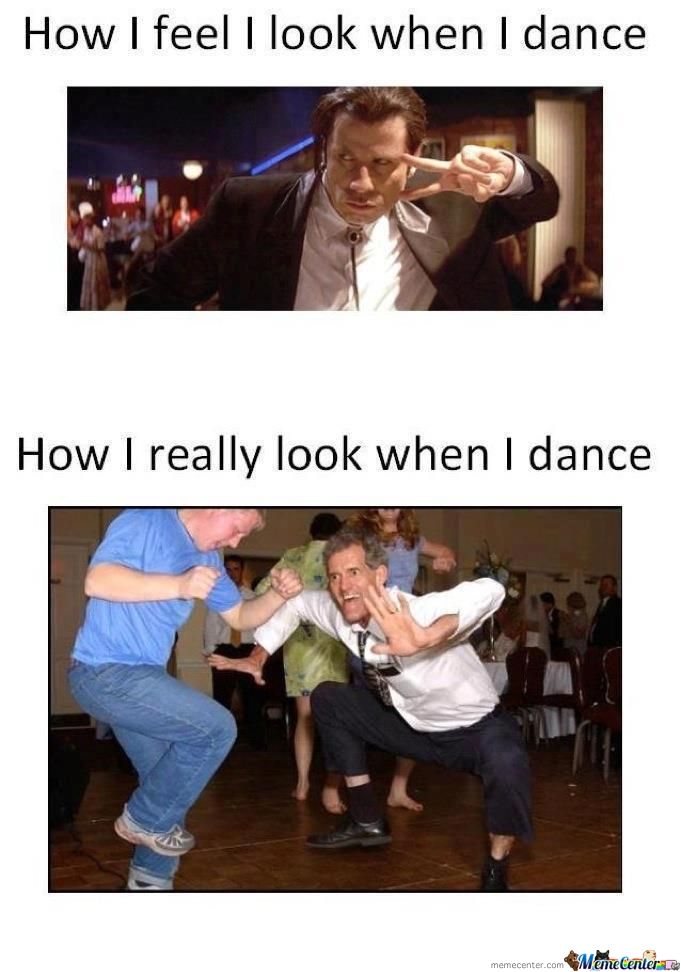
Whatever happens to you at a performance, you have only one attempt, and it is happening right now - is it worth spending it on frustration and negativity, why not treat everything that happens with joy and pleasure? At such moments, I often remember Suzanne at this performance, where Torbjorn very robustly entered her head with his foot at 0:30, but she behaved so confidently and calmly that many did not even notice this mistake when watching the video, look, maybe it will help you too!
8 . Well, the last. All this is very correct, but it just so happens that emotions in their natural form are not always suitable for the scene, even though boogie-woogie takes on a very wide range of images and characters. Therefore, perhaps, after it starts to turn out to manifest them, they will have to be "ennobled" a little.
What do I mean? There are unacceptable things for the scene. For example, look at the floor. Or look at the upper diagonal, as if you were answering a difficult ticket in an exam.

